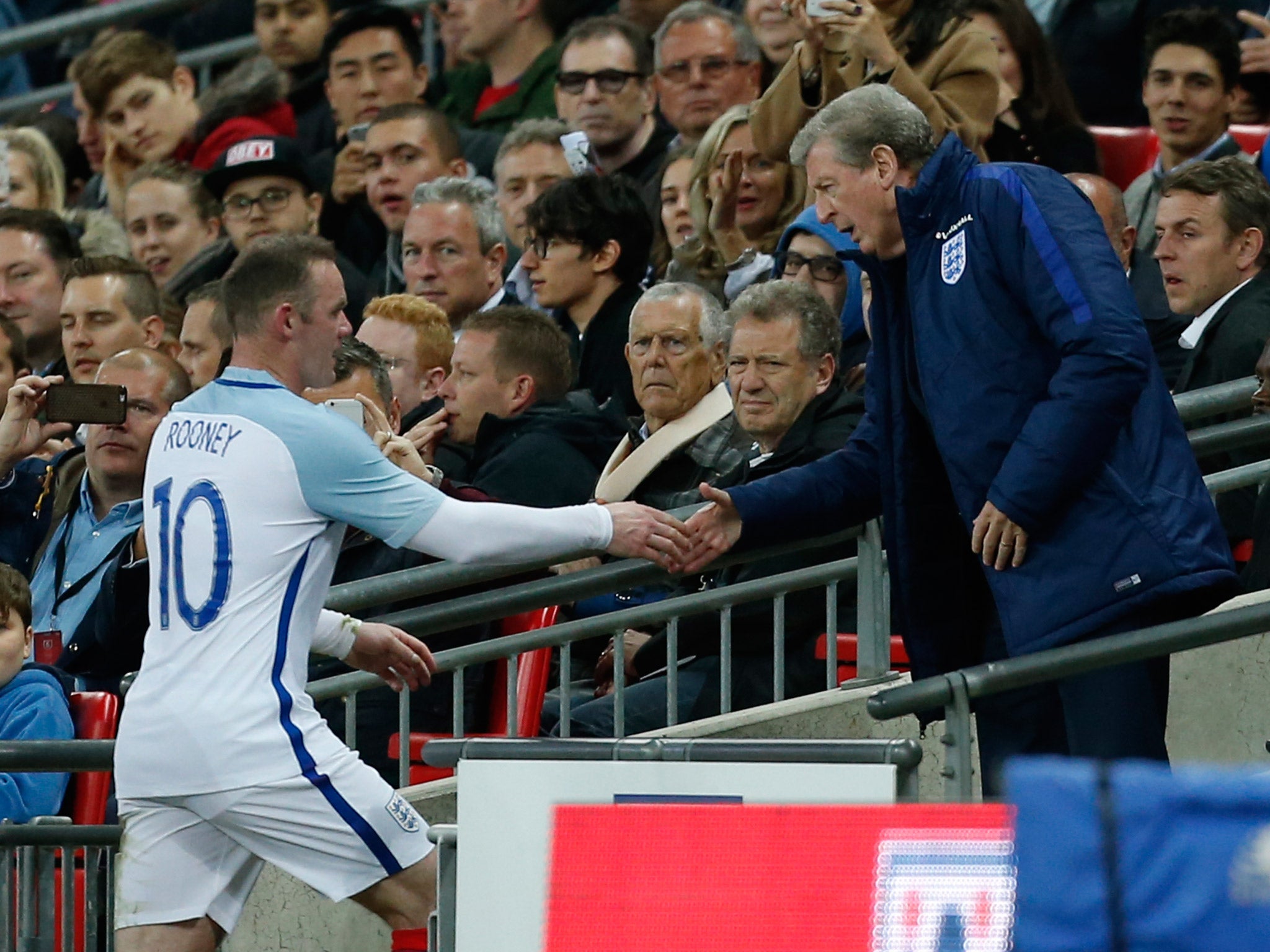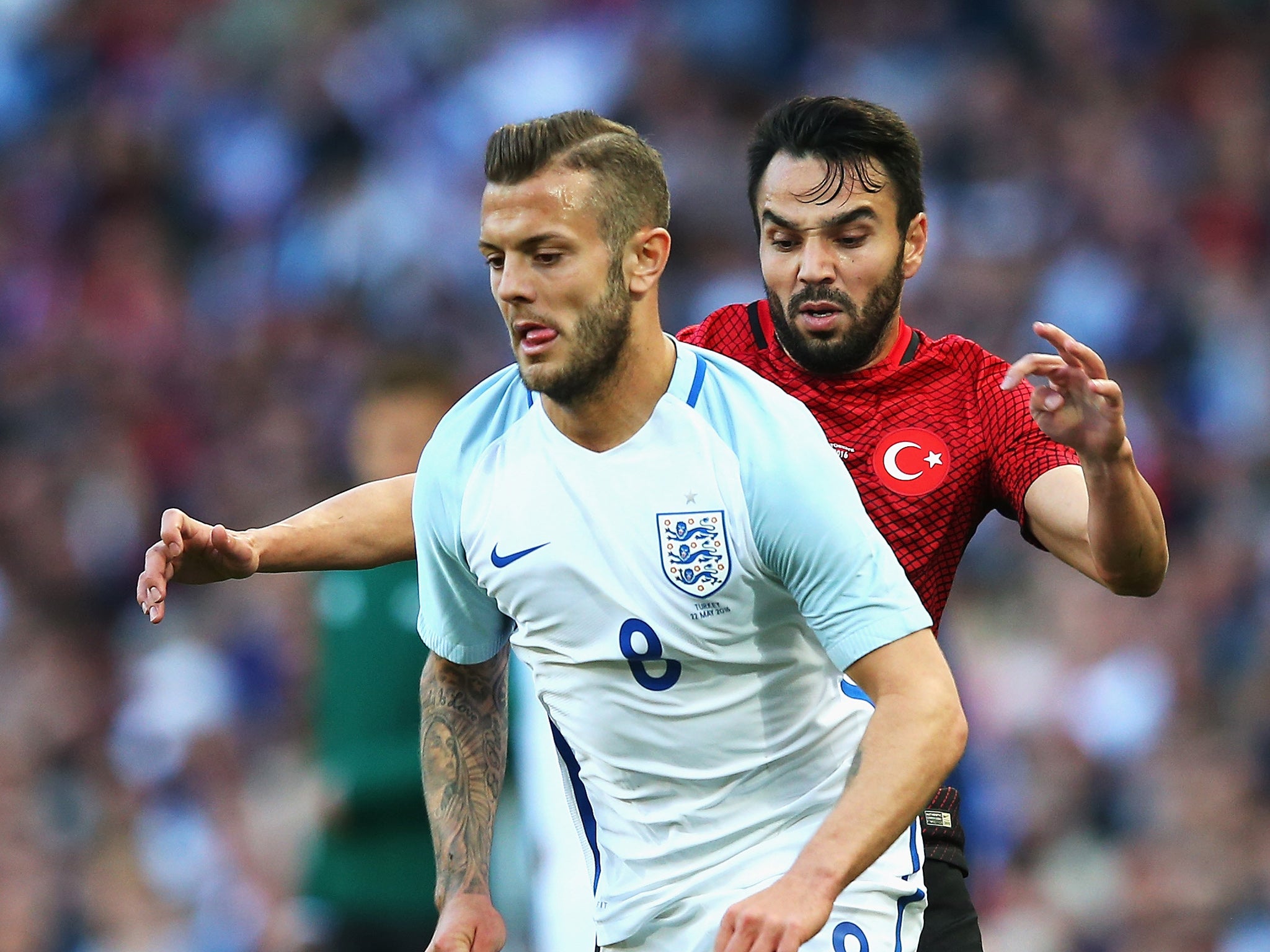Euro 2016: England didn't use the wrong formation, Roy Hodgson used the wrong tactics, says Danny Higginbotham
INSIDE FOOTBALL: Hodgson had Harry Kane and Jamie Vardy defend the wide areas, but England should have had a better plan to cope without the ball defensively

Your support helps us to tell the story
From reproductive rights to climate change to Big Tech, The Independent is on the ground when the story is developing. Whether it's investigating the financials of Elon Musk's pro-Trump PAC or producing our latest documentary, 'The A Word', which shines a light on the American women fighting for reproductive rights, we know how important it is to parse out the facts from the messaging.
At such a critical moment in US history, we need reporters on the ground. Your donation allows us to keep sending journalists to speak to both sides of the story.
The Independent is trusted by Americans across the entire political spectrum. And unlike many other quality news outlets, we choose not to lock Americans out of our reporting and analysis with paywalls. We believe quality journalism should be available to everyone, paid for by those who can afford it.
Your support makes all the difference.It surprises me that so many people seem convinced England’s lacklustre performance against Portugal – where almost every player seemed to be operating out of position - means that their midfield diamond system is flawed. I have to say that I couldn’t disagree more. It wasn’t the system that was to blame for some of Roy Hodgson’s players being in places where they shouldn’t have been. It was the way that system was implemented.
The midfield diamond is the ideal tactical base for the 11 players who were picked to face the Portuguese. What England’s players seemed to have forgotten – or perhaps just not been told – is how that shape needs to change when the team are out of possession. In elite football, it’s as important to think about what to do when you don’t have the ball as what to do when you have it. The message for Hodgson’s players needed to be something like this: ‘If you lose possession in the opposition half, give yourselves three seconds to get it straight back, then get yourselves immediately re-organised into a 4-5-1.’
That would have meant that when the Portuguese were on the ball, one of the strikers – let’s say Harry Kane – drops into a midfield line with Wayne Rooney and Deli Alli, while James Milner and Eric Dier, making up the line of five, provide protection against the opposition’s advancing full backs.
Unfortunately for England, that didn’t happen – and as a result the entire system came unstuck. With the shape still very narrow when Portugal had seized the ball, we had the sight of Jamie Vardy and Kane splitting apart and going very wide indeed to defend the wide areas. On some occasions, they took that task to such a level that they were chasing back over the half way line to support the full-backs.
Hodgson said after the game that they had ‘split’ to defend the wide space. But by being designated that role, they were nowhere near the place where you wanted them to be when the ball broke and opportunities were created. Two excellent chances presented themselves for England in the first half, but it was Wayne Rooney getting on the end of both, in the six-yard box. The first chance, a ball around the back, was heaven sent for Vardy. The second, a deep cross, bread and butter for Kane.
If you’ve got two strikers who have each scored 20 goals-plus apiece last season, why on earth would you want them to be playing in wide areas? Though the diamond was the ideal system to make the most of their threat, there just did not seem to be much conception about how you optimised them as precious goal-scoring assets.
As always with tactical planning, it’s about cause and effect. You want one of the strikers in that two-man front line which the diamond system creates – Vardy – to be stretching the defence. When he does so, that defence drops several yards deeper as a security mechanism, narrowing as it does so. (Deep-lying defences are always narrow, to prevent a ball bisecting the centre-half and full-back.) Suddenly, channel spaces are created in the wide areas, for their full-backs to attack into, and pockets of space materialise in front of the retreating defence, for players like Rooney and Alli to exploit.
It sounds simple and with this exciting blend of players at Hodgson’s disposal it can be, but when one cog in the machine falls out of place then the whole engine fails to work.
With Vardy and Kane operating so wide, the system looked like a 4-3-3 at times, with Rooney in the middle. Rooney is so obviously his best when he has pace around him, feeding off the fear which that speed breeds in the opposition defence to find space to create and find a pass. I never tire of saying that Rooney is the best in the business when it comes to picking the pass in a confined space. So, make sure that he is doing what the player at the tip of the midfield diamond is supposed to be doing: capitalising on the space that having those two strikers creates for you.
Who was responsible for Kane and Vardy drifting out of position? They may say that they were! Perhaps they were working as events dictated, pushing wide intuitively when they saw the wide space available to Portugal. That’s nothing less than I’d expect either of them to say. They’ve been brought up on an honest philosophy where work-rate and effort are considered huge parts of their job.
But sometimes a player can be too honest. It’s nice that they wanted to do their part defensively, but if I’ve got a player who’s scored 20 league goals in my team, then the last thing I want is to see him chasing back into his own half. If the opponent has gone over the half-way line, the orders for Vardy and Kane must be: ‘Let him go.’ The manager has to instil this.
The other puzzle which the Wembley match created is where Jack Wilshere might fit into England’s system. He is one of the most naturally gifted players the English nation has as its disposal, but does he fit into the diamond? I’m not sure he does.
Few people find the idea of James Milner starting at Wilshere’s expense an attractive proposition because Milner is less exciting on the ball. But you need the extra defensive ballast that Milner creates, if you are playing a diamond system. You want your defenders to go forwards, as well as Alli and Rooney, so that means that when the opposition are breaking you have only defensive midfielder and your centre backs as cover. Milner provides the extra defensive stability. To deploy another attack-minded midfielder leaves the team looking unbalanced and exposed.

Don’t let’s forget that the fact England defeated Portugal is encouraging. It hasn’t happened in recent years and that will buoy the team. But what England need to learn from the victory - against a side who had ten men for much of the game and lacked the brilliance of Cristiano Ronaldo - is how to make the most of the system Hodgson has reached for. I saw that he said on Thursday that football was 11 v 11 and that players, rather than systems, were what mattered. That line of argument only goes far. Why use a diamond if you are not prepared to examine how best it can work for you?
Join our commenting forum
Join thought-provoking conversations, follow other Independent readers and see their replies
Comments